Black Current – Texts: The Smith-Lesouëf Library
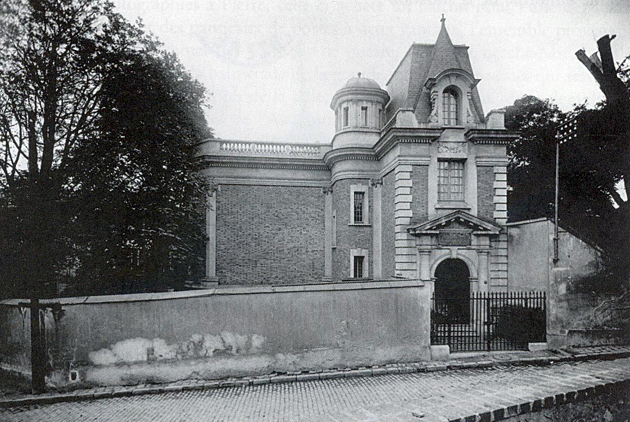
FNAGP.
The Smith-Lesouëf Library, a library both public and private
Text Caroline Cournède
Written for Black Current exhibition publication
Built between 1913 and 1916, on an initiative taken by the sisters Jeanne Smith and Madeleine Smith-Champion, the Smith-Lesouëf Library was purpose built to house, in Nogent-sur-Marne, the incredible collection of their uncle Auguste Lesouëf, a leading scholar and gentleman of leisure of the 19th century. From 1913, the future building and its collection (boats, Neapolitan figurines but especially manuscripts, rare books, Japanese prints, and so on) were donated to the French National Library, which clearly reflects the concern of the two sisters, both of whom were childless, to guarantee the preservation and posterity of this rare collection.
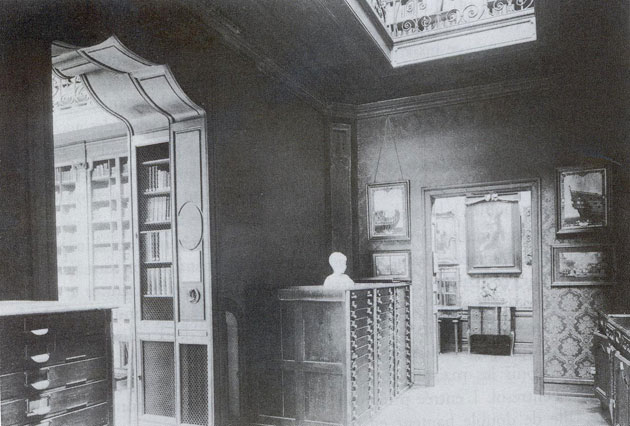
FNAGP.
Almost 100 years have passed since, and the library has had a checkered fortune, by times practically forgotten, and by other times very popular. The library officially became a public library when the first librarian arrived around 1920, but it remained essentially under the watchful eye of the Smith-Champion family. The National Library then more or less lost interest to the benefit of the Maison Nationale des Artistes. The library was then used as a venue for concerts and the like… before falling into a dilapidated state over recent years.
In spite of the completion of the building itself in 1916, World War I delayed organizing and classifying its contents, which was finally completed in 1919 on the basis of suggestions made by Pierre Champion, a historian who married Madeleine Smith in 1907. Once the contents had been inventoried, classified and ordered, the first librarian, Léo Mouton, took up his functions and the library was opened to general public a few days each week.
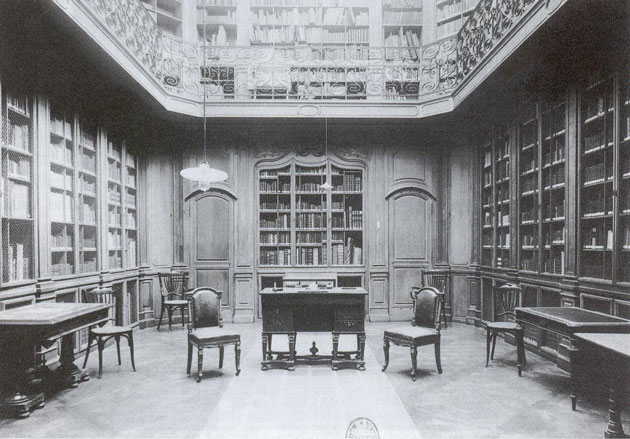
Image courtesy FNAGP.
Even though the library, designed to function as a library museum (in addition to books, a number of paintings and antiques are also on display) was open to the general public from this time on, it remained nevertheless the personal domain of the Smith-Champion sisters, who made their preferences and presence clearly felt. The bonuses that were granted to the librarian, in particular his six months of holidays each year, served to give the family back complete liberty and rule over the library. Thus, it had not really become a bone fide public library.
During this initial period, the Smith-Lesouëf Library was in constant transition, operating by times as a public library, and by other times as a private one, attempting to harmoniously orient the concept of a private library towards that of a public library, without however completely succeeding in doing so.
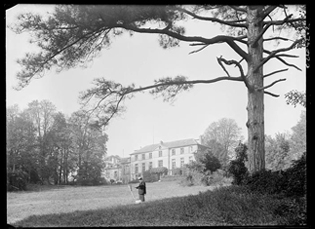
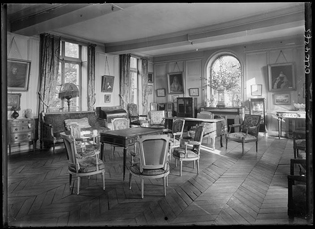
Maison des Artistes, seen from the park, salon, date unknown. Image courtesy FNAGP.
The outbreak of World War II ushered in a number of changes. The major manuscripts and books were taken to Paris, to keep them out of enemy hands. The librarian also left Nogent. Madeleine, Pierre, and Jeanne all passed away in relatively quick succession, and the properties bordering those of the two sisters were donated to the State to build a retirement home for artists and writers. This led to the Maison Nationale des Artistes, established in 1945.
The National Library no longer took any real interest in the property and the Maison Nationale des Artistes tacitly obtained partial usage. From this point on, an entire community of artists regularly consulted the library’s contents, and contributed more books on arts and techniques. A former librarian, working as a secretary for the Maison Nationale des Artistes, reviewed the classification of the expanding collection. Even though the library was rarely open to the general public, it continued to function as a place of studies and research.
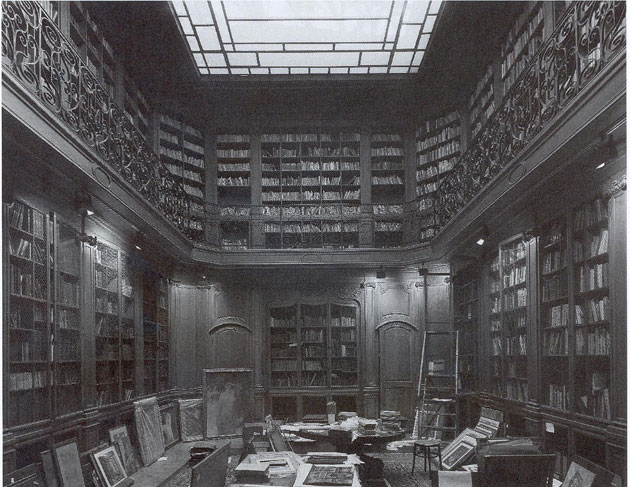
Image courtesy FNAGP.
With the arrival of the 80s, further changes took place. The National Foundation for the Graphic and Plastic Arts was established by combining the Nogent Smith-Champion donation with a donation from the Baronne Salomon de Rothschild, and new, dynamic life was breathed into the Maison Nationale des Artistes. At the end of 1982, the National Library took back any remaining works in the donation to Paris, and from then on, the Maison Nationale des Artistes had complete usage of the location.
From this point on, the library functioned essentially as a place of entertainment rather than study with concerts, live events, special evenings and readings. The exceptional sound qualities of the wood paneling, superbly re-creating the atmosphere of 19th century, naturally attracted leading jazz names such as Dee Dee Bridgewater and Zanini. One particularly noteworthy evening was a royal banquet given for the descendants of the Capétiens, one of the royal families of France, which saw a veritable orgy of luxury with a gargantuan meal, majordomos in full costume and sedan chairs. Surprisingly, in spite of this intense activity, the library itself was more or less abandoned, functioning only as a storage place for old books and objects left there by Maison Nationale des Artistes residents.
About five years ago, the National Library officially transferred ownership of the building, which was no longer of any real interest to them, to the National Foundation for the Graphic and Plastic Arts. This saw the National foundation commence a major project to renovate the library, and promote its contents.
And, even though the building has undergone intense restoration and renovation work, the library has lost none of its unique atmosphere and charm, and never fails to work its magic on all those entering for the first time. Including Harmen Liemburg, who is now working on a project based on the library’s contents, involving an artistic process that could see the intervention of other artists. Indeed, we are hopeful that these artistic interventions will have a positively contagious effect, bringing the library out of its slumber to embrace this new century with energy.
Sources:
Archives of the National Foundation for the Graphic and Plastic Arts
I. Duhau “La bibliothèque Smith-Lesouëf à Nogent-sur-Marne, une fondation bien particulière”
Architectures de l’imprimé, n° 11. January – July 2006